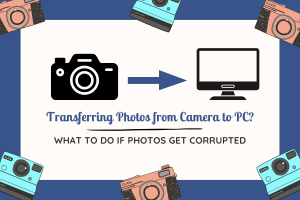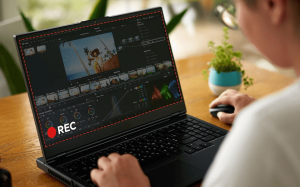Format USB Flash Drives on Mac Devices with these 3 Options

While it becomes quite difficult to grab desired in-built secondary storage on your PCs along with preferred RAM options, most users switch to USB flash drives. And, it’s kind of more affordable than upgrading your system memory functionalities and storage.
On the other hand, USB flash drives are way more compact and you can carry them wherever you want. Additionally, transferring any file to any PC is just a matter of time, if the USB drive matches its compatible file type. Most of the USB flash drives are available in two formats, and they are NTFS and FAT32. Well, there are other options, too; such as HFS+, APFS, exFAT, etc.
Related : WII U Title Keys for cemu, USB Helper
Unfortunately, NTFS is not supported on Mac operating systems. So, if you are thinking of using a USB drive of NTFS format, then you have to reformat the drive for future use in your MacBook. Or else, you can’t use the USB drive for storing anything from the Mac device. As the macOS X is not capable of writing on NTFS file system.
However, it’s completely fine with the FAT32 format. And, Windows Operating System is compatible with NTFS one. Well, if you have to use an NTFS USB drive on your Mac or any other USB drive for the first time, then reformat would help you. Let’s get to the details.
How to Identify the File System Format of the USB Flash Drive?
USB data recovery experts suggest inspecting the file format of the USB flash drive, beforehand. If the format is supported by the MacBook, then you need not reformat it unless you require a clean USB flash drive.
And, if it requires any modification, then you don’t have to put effort into pasting any file again and again on the drive, as it all goes in vain. Otherwise, your stored data on the USB flash drive can be at a vulnerable edge due to file system incompatibility.
Here’s how you can check the file system format of your USB flash drive:
- Connect the USB flash drive. Go to applications on your Mac device. The next destination is Utilities.
- Explore the Disk Utility menu. There you can observe all the hooked up devices with your Mac.
- Select the USB flash drive that you wish to check. You can locate its name, present file system supporting and other details in the Partition tab.
In case, you find the file system NTFS or anything from EXT 2,3,4, then you need to reformat the USB drive on your Mac. Even if the flash drive supports APFS and your Mac is using any macOS lower than 10.13, then the flash drive is not compatible with your device.
Be extra cautious when you are dealing with re-formatting the file system of your USB flash drive. Otherwise, you might have to opt for USB data recovery tools or services. It would be better if you save the data stored on any other PC, before formatting, as the data would be erased automatically.
Find : Top 10 Best Computer Brands and Laptop Manufacturers
Procedure to Format the USB flash Drives on Mac Devices
If you have found out that the particular USB drive is of no use on a Mac system, due to file system mismatch, then you have to format the drive. The Mac operating system can read NTFS files, but it can’t write anything over them. While you are still in the Disk Utility section checking the status of the flash drive, you can make changes for successful format over there. Again, we would like to remind you that all your data stored on the flash drive would vanish after the format. So, make sure that you have a back up of the data on the drive.
However, ensure that you have chosen the specific flash drive that you need to format under the disk Utility section. There are several tabs named First Aid, Erase, Partition, RAID, Restore and Unmount. The First Aid tab would run a diagnosis to inspect if anything is wrong with the USB drive. Whereas the Partition tab is for creating additional partitions in the flash drive.
The Erase tab would immediately format and delete all the saved data from the USB drive. And, the Restore tab would revive the disk image to a drive on Mac. Lastly, the Unmount tab would let you safely eject the drive without the worries of data loss.
Find : 15 Best Tech and Computer Magazines
Formatting would wipe out the data from the flash drive. Therefore, you have to head towards the Erase tab. Provide a new name to your USB drive. Additionally, change the format to any Mac compatible system file format. We have included all the available format types, later in the next section. Stick to the Erase option and click Done once the process ends. Exit the window by opting for the Quit Disk Utility option.
Different System file Formats on Mac Devices for USB Flash Drives
The Mac operating system has included diverse file system formats namely APFS, Mac OS Extended, ExFAT, MS-DOS (FAT). And, from there you can avail OS X Extended and its variations, MS-DOS (FAT), ExFAT as supported format types for your USB flash drives. APFS is only supported for macOS 10.13 and higher versions and your device won’t support the file system if it’s running on a lower OS.
Let’s find out the benefits and disadvantages of these file system formats.
Mac OS Extended (Journaled)
This format is the most popular one among Mac users. This means that you can avail full freedom and compatibility with your USB drive on Mac if you go for this. Additionally, the compatible USB drive would support distinguished characters of different macOS versions. The format doesn’t put any limitation over the size of the flash drive.
The disadvantage of using this format is to make the flash drive incompatible for Windows systems. You can’t transmit the files from another PC to your Mac with this file format. However, other variants of the same format are sensitive and encrypted.
ExFAT
This won’t work for everyone. If you are working on Macs with macOS X 10.6.5 or newer, then it’s worth it for your USB drive format. Supported by Windows XP SP2, Vista and Windows 7 and later versions, you can find a great chance of interoperability when you consider both Windows PCs and Macs. On the other hand, this file system format supports greater file sizes such as more than 4GB.
However, lower macOS versions don’t support the file format. Additionally, the older Windows versions than Windows XP SP2 don’t support the file format, either. Otherwise, it’s a good choice for formatting USB flash drives on Mac.
MS-DOS (FAT)
This simply converts the NTFS file system or other unsupported file systems of the drive into FAT32 format. And, this is one of the most versatile file system formats available on the earth. Whether it’s your Windows PC, MacBook, PlayStation or Xbox 360, the format is supported on all these devices. Surprisingly, network-enabled cameras and video cameras even support the file system format.
But, the drawback of this format is that you can’t transfer a file larger than 4GB. In addition to this, the format fails to support OS X Lion. If you are quite size-specific, then you can go for this format.
Find : 5 Signs Your Businesses Computers Aren’t Working Properly
Who’s the Clear Winner, then?
The file system format on Mac devices for USB flash drives depends on the platform references, file size and operating system features. If you have to operate the drive only on Mac devices, then you can blindly go with Mac OS Extended. Or else, choose anyone from the ExFAT and MS-DOS (FAT). Be careful with the file size for data transfers.






